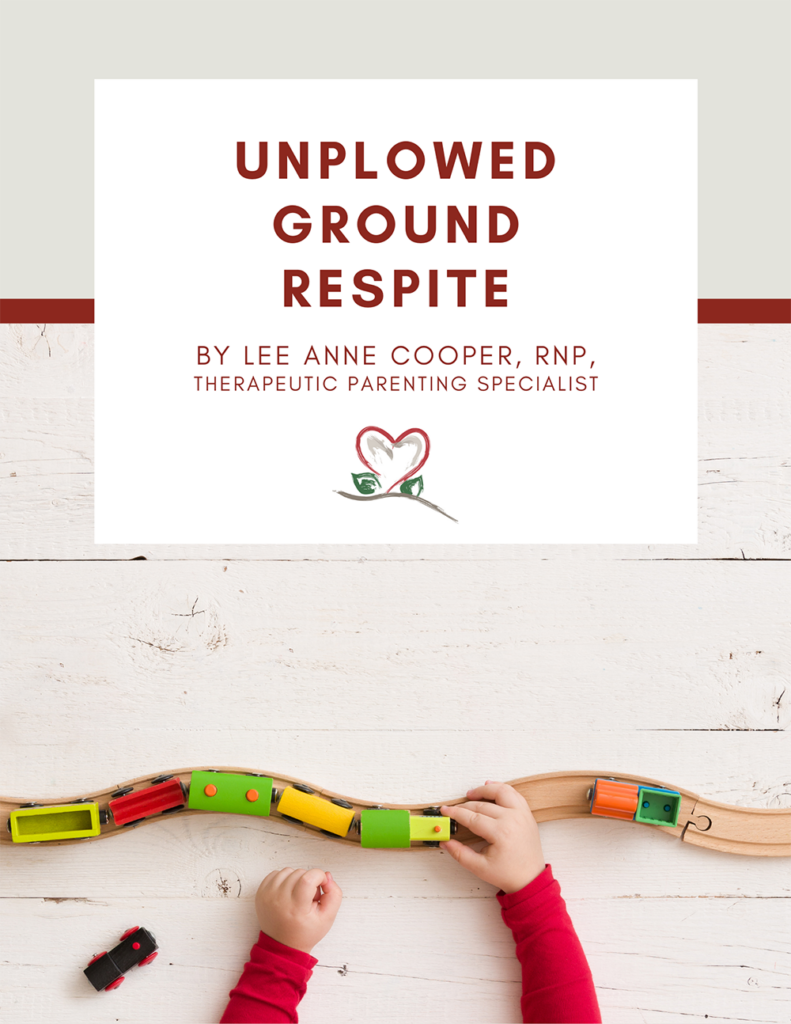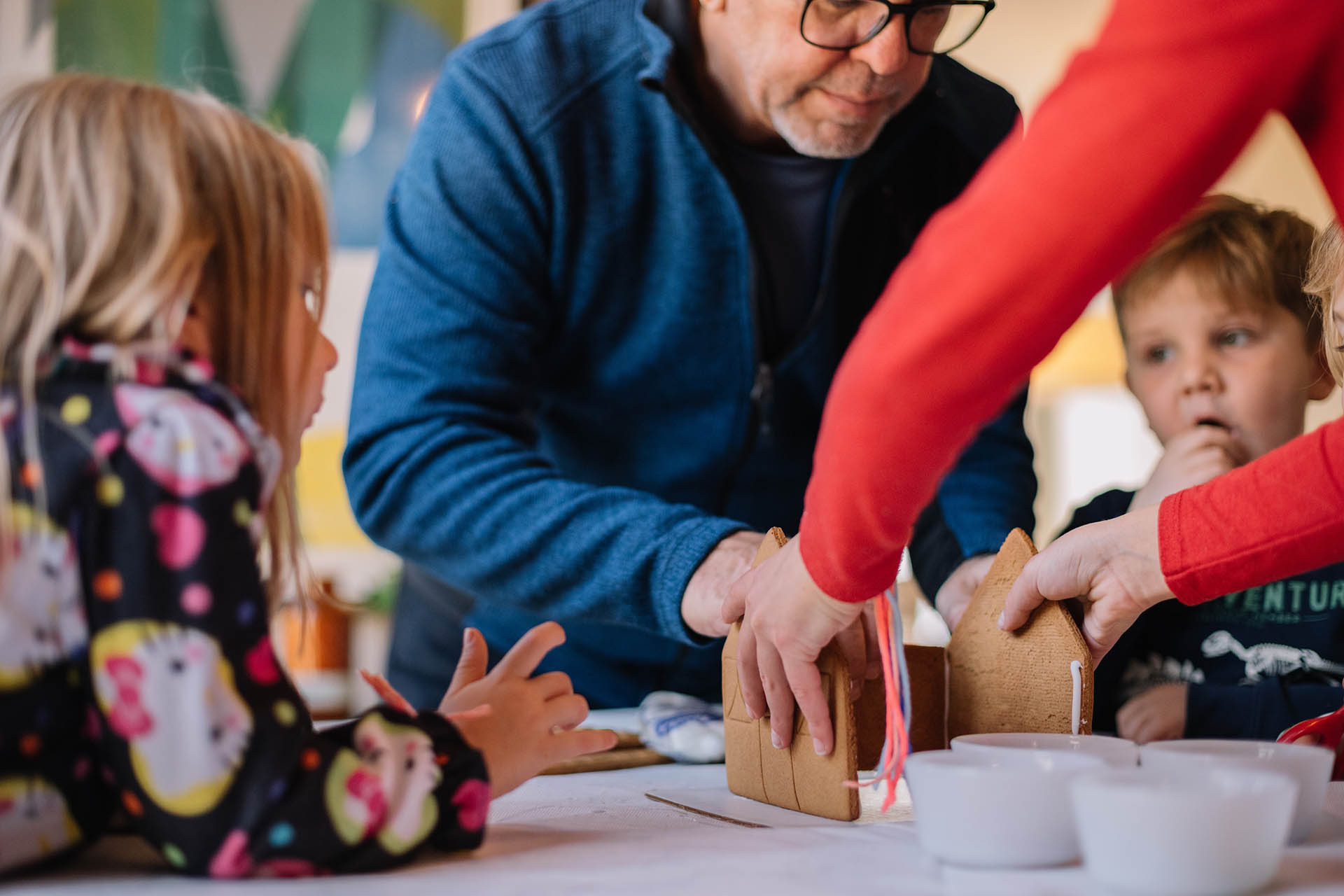Welcome, Respite Providers!
Resources

1. The Respite Provider’s Role
-Consistently point to the child’s awesome parents
2. The Basics of Attachment
-Your role is a support role. Unplowed Ground is an connection-based parenting program. Your role is to support the parents, as they work to connect with the child.
3. The Most Important Thing
-While we are not nurturing the same as mom, we are focused on providing consistent “nurture” with high fives, a kind tone of voice, and pointing back to mom.
4. The Sitting Spot
-If you are providing respite in your home, make sure you establish a sitting spot for the child in your home.
-The child will retreat to their sitting spot in transition.
For example: You might say to the child: “Sally?” She would respond, “Yes, Mrs Claire?” You would reply with, “I want you to go put your plate in the sink, and then go to your sitting spot.” You might then ask a question: “What is it that I want you to do in your sitting spot?” Sally replies, “Sit and wait quietly until you tell me what to do next.”
You should not leave the child in the sitting spot for long periods of time, only for a few minutes in transition.
5. The Big Six
Make your own chart of the Big 6 and have it displayed in your home while the child is there for respite. Let the child know that you know the Big 6 and that they will be expected to do the Big 6 while in your care.
Answering correctly may seem small, but it is so important. They are doing this at home with Mom and Dad. Make sure they are answering you correctly with Mrs. ____ or Mr. ______ every time.
In addition, make sure they are getting your attention correctly.
6. Passing the Five Trust Tests
Make sure that you are in clear communication with the parents regarding what is truly going on at home. This will help you know how to prepare your home. For example, if they have a history of stealing, make sure that you are checking their pockets.
It is not a question of “if” you will have to pass a trust test, but “when.”
Make sure that you memorize the five trust tests.
The name game is a very, very common test during respite. Do not fail this test. Let them earn another chance to hear.
No animal privileges during respite.
7. Intensive Care Nurture
It is important to note that the respite provider’s role is to preserve the benefits of the intensive nurture their mom is providing at home. We want to make sure that we do not give the child any competition while attaching with his/her mom.
You should always be kind in your interactions with the child, but make sure that you approach it as more of a formal relationship, similar to the relationship a teacher would have with a student. For example, instead of hugs, give high fives.
No animal privileges during respite.
8. Intensive Care Structure
Follow this model to equip your home for stations.
The no roaming policy should be implemented in your home the entire time the child is in your care.
Rotate through stations every ten minutes if possible. Stations should be FUN for them! Structure is NOT a punishment!
9. How to Handle Opposition and Defiance
If you need to wait out the child, kindly and calmly say, ``I don't want you to do it right now. I want you to rest. You may stand, sit, kneel, or lie down and rest where you are until you're ready. Say, ‘Ready Mrs. ___; when you're ready.``
Give them the time they need for their brain to shift from opposition and defiance, even if it takes hours.
For required activities, bring necessary items to the spot where they are “resting.”
When they say “Ready, Mrs. ___,” have them do what you had asked, then move on. The ``resting`` was the consequence. Do NOT layer consequences.
10. Don’t Dance With W.A.L.T.E.R.
Memorize W.A.L.T.E.R. Remember, Warnings, Arguing, Lectures, Threats, Explaining, and Rescuing are NOT effective tools to use with children from trauma!
11. Loving Responses
Using a loving response, and then move on.
If a child is displaying inappropriate behavior, such as cursing or disrespectful language, simply respond, “Thank you for letting me know.” You might also say, “Oh, that’s never good.”
12. More Questions, Fewer Directives
13. Cross-Talk
14. Consequences With Love
Consequences must not be negative or punitive at all, but merely serve the purpose of letting the child know that you noticed their poor choice.
Always provide the mildest consequence that will let the child know you noticed.
A brain shifter is a small, but effective consequence. It may be best to choose the ones that draw the least attention, such as, “Touch your nose 4 times.” Or, “Give me 3 bunny hops.” Then follow up by asking, “Why did you have to do those?”
If they choose not to do it, wait them out by having them rest until they are ready to do the consequence.
15. Noticing
16. Talking It Out
Having the child draw their heart upon entering your home would make a great first station, and may give you some insight on how the rest of your time together will go.



